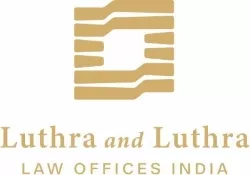Introduction
A Company is a highly flexible form of vehicle for carrying on business, whether profit or not-for-profit. Incorporation and registration of a company according to the provisions of the Companies Act, 2013 (previously, 1956, hereinafter referred to as "Act") vests it with a corporate personality distinct and independent from its members. It thus becomes a separate entity capable of suing and being sued.
This can also be substantiated from the mid-Victorian era judgment of Aron Salomon v. A. Salomon & Co. Ltd.,1 wherein Lord Halsbury L.C. and Lord Macnaghten, observed that "The Company at law is a different person altogether from the subscribers..."
Growth of Corporate Fraud and Lifting/ Piercing the veil
'Corporate veil' is lifted in cases where the Court tries to reach the person behind the veil or to reveal the true form and character of the concerned company. The Act integrated with various provisions, points out the person liable for any such improper/illegal activity as "officer who is in default" under Section 2(60) of the Act, and also includes people holding the positions of directors and key-managerial personnel. Under Section 339 of the Act, in case of winding up of the company, if it is found that company's name was being used for carrying out a fraudulent activity, the Court is empowered to hold any such person to be liable for such unlawful activities- be it Director, Manager, or any other Officer of the Company.
Wherever an incorporated company deliberately tries to avoid legal obligations, or wherever it is found that the incorporation of a company is being used to avoid force of law, the Courts have authority to disregard the legal personality of such company and proceed as if no company existed. The corporate veil is sometimes lifted to hold a parent company liable for its subsidiary.
The doctrine of lifting/ piercing the corporate veil has been the subject of drastic change. Though this doctrine was primarily applied in cases of tax evasion and non-compliance of the provisions of the Companies Act, however, the Courts have broadened the concept and applied the same in – inter alia – the following scenarios2:
- Where group companies/companies have been used to perpetuate a fraud or illegality, as in Delhi Development Authority v. Skipper Construction.3
- Where execution proceedings have been initiated, the Court always has the power of lifting the corporate veil which are used as mere cloaks where device is employed and the properties have been acquired fictitiously in the name of other persons for the purpose of committing illegalities or for defrauding others, so as to enable it to pass appropriate orders to do justice between the parties concerned, as in Formosa Plastic Corporation Ltd. v. Ashok Chauhan.4
- Where business realities of the situation require the veil to be pierced, as in DHN Food Distributors v. Tower Hamlets London Borough Council.5
- Where there is involvement of industrial law and human rights and also where the requirement of justice so requires, as in Kapila Hingorani v. State of Bihar.6
- Where associated companies are inextricably connected as to be in reality part of one concern, as in Life Insurance Corporation v. Escorts.7
Lifting of Corporate veil in Winding up and Insolvency proceedings
During the course of winding up of a company if it appears that any business of the company has been carried on with intent to defraud the creditors of the company or any other person or for any fraudulent purpose, "the persons who were knowingly party to such carrying on business, shall be personally responsible without any limitation of liability for all or any of the debts or other liabilities of the company, as the court may direct.8"
Recently, the Hon'ble Supreme Court in the matter of ArcelorMittal India Private Limited vs. Satish Kumar Gupta,9 applied the principle of lifting of corporate veil in order to apply ineligibility prescribed under section 29A(c) of IBC to the ultimate shareholder of the two bidders i.e. ArcelorMittal India Private Limited and Numetal Limited. In the case of Numetal, it was observed that one of the shareholders was Rewant Ruia whose father, Ravi Ruia was a promoter of Essar Steel (which was already undergoing insolvency proceedings). Further, Ravi Ruia had also issued a guarantee in favour of the creditors of Essar Steel. Therefore, Numetal was held ineligible in view of Section 29A of IBC. Similarly, ArcelorMittal was held to be ineligible under Section 29A(c) of IBC, as ArcelorMittal Netherlands was found to have been the promoter or exercised control over two companies namely, Uttam Galva Steels Limited and KSS Petron Limited, which were classified as an NPA for more than 1 year prior to the commencement of the insolvency resolution process of Essar Steel.
Identity of the Corporate after lifting of Corporate Veil
In State of U.P. and Ors. v. Renusagar Power Co. and Ors.10, the Court held that a holding company and subsidiaries are incorporated companies, and, in this context, each has a separate legal entity. Each has a separate corporate veil. But that does not mean that the holding company and the subsidiary company within it all constitute one company. However, once the corporate veil is lifted it appears that the associated/ subsidiary companies are inextricably connected as to be, in reality, part of one concern.
It is relevant to point out that 'lifting of the veil' by the Court does not change the treatment afforded to such involved companies by stakeholders not party to the proceeding in which corporate veil is lifted. While the corporate veil was lifted in Renusagar (supra), its companies, namely, Hindalco Industries Ltd. and Renusagar Power Co. Ltd. continued to have separate legal existence in respect of continuity and succession after the judgement of the Court was passed. Thus, even though the doctrine of corporate veil is applied, the separate identity of the company from its directors is not totally discarded.
Conclusion
As a natural corollary of the above discussion, it appears that it would be proper to require that the liability be imputable on the actual debtor Company. A holding company and subsidiaries are incorporated companies, and, in this context, each has a separate legal entity. Each has a separate corporate veil. 'Lifting of the veil' by the Court does not change the treatment afforded to such involved companies by stakeholders, not party to the proceeding in which corporate veil is lifted. Such a corporate will continue to have a separate legal existence in respect of continuity and succession after the judgement of the Court is passed. However, the aspect of the doctrine as envisaged hereinabove are only an illustrative and not an exhaustive interpretation of the concept, accorded by judicial precedents.
Footnotes
1 [1897] A.C. 22
2 Bhatia Industries & Infrastructure Limited vs. Asian Natural Resources (India) Limited and Ors. [2016(6)ABR132]
3 (2000) 10 SCC 130
4 1999 (1) AD (Delhi)
5 (1976) 1 WLR 852
6 (2003) 6 SCC 1
7 (1986) 1 SCC 264
8 Section 339 of the Companies Act deals with Liability for fraudulent conduct of business
9 CIVIL APPEAL NO..9402-9405 OF 2018; decided on 04.10.2018
10 (1988) 4 SCC 59
The content of this article is intended to provide a general guide to the subject matter. Specialist advice should be sought about your specific circumstances.


